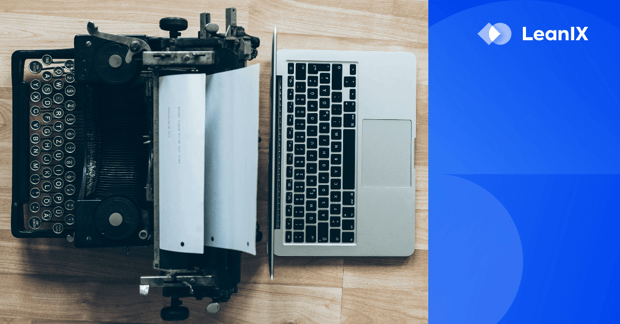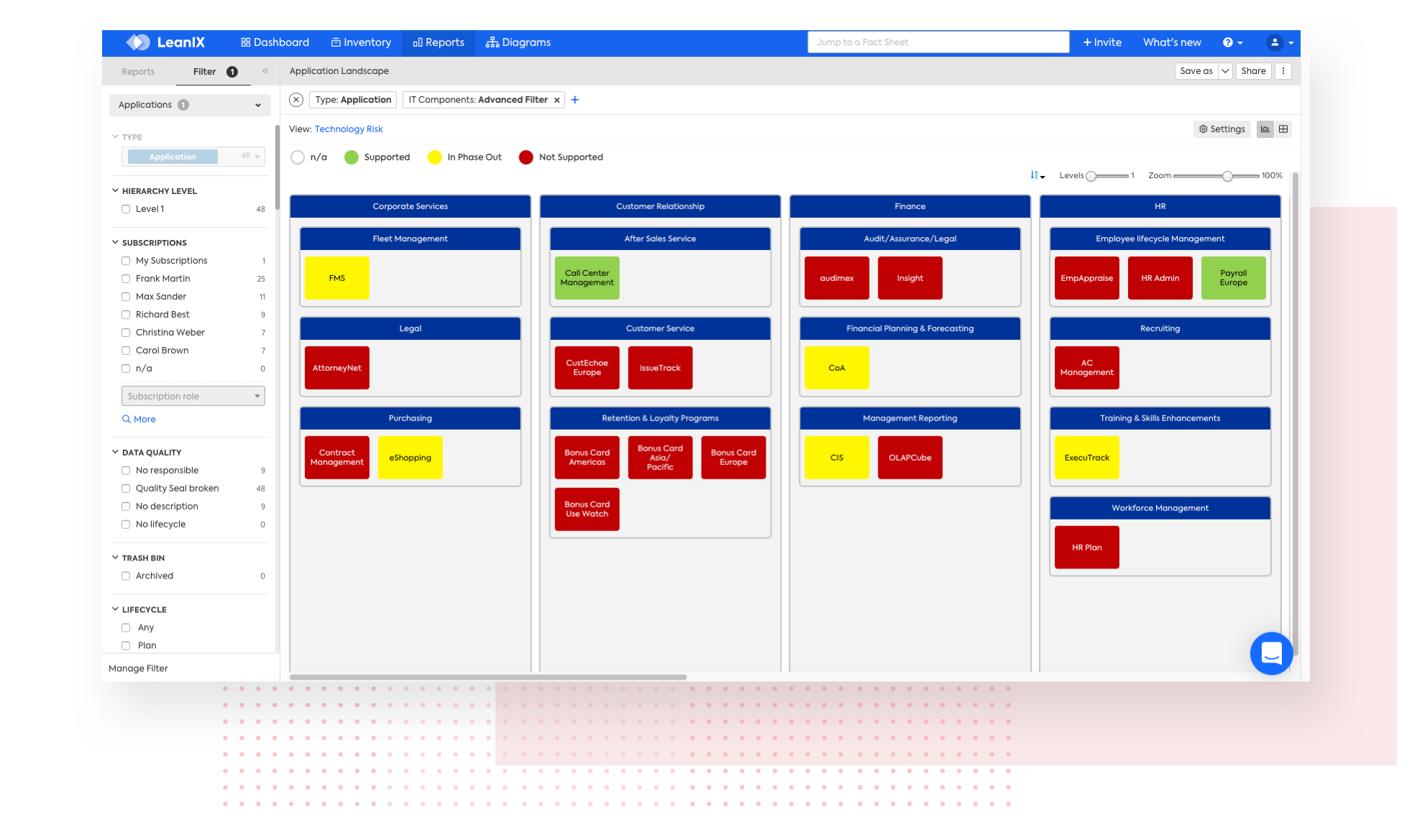
Enterprise architecture management can be undermined by obsolete IT components. Discover five reasons why technology obsolescence risk management needs to be a key part of your enterprise architecture practice.
As enterprise architects, it's easy for us to focus on the application portfolio and lose sight of the technology that runs those applications. To ensure your applications support your business strategy, you need to empower them with functional IT components.
If your IT components reach end-of-support, you could find yourself losing value from your exciting, innovative applications and falling short on your strategic goals. As such, tracking your IT component lifecycle is essential for enterprise architects concerned with technology obsolescence risk management.
Before we look at how you can do that, let's consider the dangers of ignoring technology obsolescence risk. Below, we list the five biggest issues that you face from technology obsolescence.
Technology Obsolescence Risk 1: Failure
On November 7, 2015, Paris-Orly airport was forced to shutdown for seven hours due to a network failure. Air traffic controllers explained that this was due to the airport running operating systems that were over 20 years old and long out of support.
The older technology gets, the more likely it is to simply stop working, shutting down your operations and putting your profits on hold until it's fixed. Even once the technology is back in service, however, your reputation could be irreparable.
For enterprise architects, technology obsolescence risk management is a game of brinksmanship. Every day is another roll of the dice to find out if you've saved on the cost of replacement or pushed it too far and met catastrophe.
The key here is to track the exact odds of your obsolete tech failing against the time it takes to replace it. This way, you can leave your technology transformation until the optimum time to minimize costs.
By logging all your IT components against actual vendor lifecycle data, you can see precisely where in the support lifecycle each of your IT components is. LeanIX can provide you with this essential intelligence for IT risk management.
Technology Obsolescence Risk 2: Cyber Breach
In 2022, Cybernews.com hacked 28,000 enterprise printers to raise awareness of the dangers unsecured IT components pose. Obsolete technology is not able to keep up with the latest cyber crime techniques, so it opens you up to attack.
The global cost of cyber crime is set to reach USD 10.5 trillion by 2025, according to Cybersecurity Ventures. With the financial costs of cyber breach so high, leaving yourself open to vulnerability with obsolete technology is unacceptable.
Regulators would agree. Credit company, Equifax was fined more than USD 575 million for a 2017 security breach due to unpatched software.
It's, therefore, vital to have a complete understanding of your IT landscape with detailed information about what IT components support what business processes to know where the risks are. This is why LeanIX empowers enterprise architects to map what data is flowing through which component and which of those is obsolete.
Technology Obsolescence Risk 3: Maintenance
Obsolete technology requires constant maintenance to keep in operation. Not only is it more likely to break down and require IT support, but older technology is less automated and user-friendly than its modern counterparts.
Maintaining this technology requires human resources and that costs money; around 75% of the average IT budget, according to MTS IT. With modern technology architecture, you could spend the resources on innovation and gaining a competitive edge.
Yet, starting from scratch with a completely cutting-edge tech stack isn't a feasible option either. Just like technical debt, technology obsolescence risk management is a balancing act between investment in new tech and maintenance of legacy tools.
Key here is to be able to model your enterprise architecture and use this as a sandbox to play in to find the right balance for your IT budget. This is something you can do with the road mapping capabilities of LeanIX.
Technology Obsolescence Risk 4: Talent Turnover
Whether your employees are spending all their time tinkering with tech they know will be replaced in the next twelve months or they're wasting productive time wrestling with slow, malfunctioning tools, obsolete IT components are a constant source of frustration for your team. In fact, Adobe found that almost half of US workers would quit their job over frustrations with unsuitable technology.
We know that having the right talent in place is absolutely essential for thriving in the modern market. Losing the people you need to drive your strategy forward due to an old printer is far from ideal.
In order to avoid this, enterprise architects need to be in contact with all of their stakeholders. By performing regular user surveys to find technology pain points, you can identify where technology is causing frustration in your service-oriented architecture.
This is why the LeanIX platform can be viewed by anyone in your organization, so that you can get everyone onboard with your work. This is how you can build a technology obsolescence risk management community.
To find out more, read our previous article:
READ: Technology Obsolescence Risk Management Part 3 - The Who
Technology Obsolescence Risk 5: Losing Your Edge
The above risks are bad enough alone, but beyond this, what you risk by allowing your obsolescent technology to get out of control is losing your ability to compete in the market. Your IT components may be humble, but they are the engine that drives your enterprise technology.
You can have all of the innovative, artificially intelligent, cloud-based technology in the world, but it's not going to be effective running on outdated servers, obsolete operating systems, and decrepit machines. Effective IT components are the foundation that all your technology runs on.
Yet, buying and implementing new technology all the time isn't cost effective. Enterprise architects need to hit a balance between empowering your company with the right tech and ensuring longevity so you're not having to waste money on constantly replacing your tech.
Knowledge is, therefore, power in technology obsolescence risk management. Knowing precisely how long you have before each component needs to be replaced will allow you to plan and manage your IT landscape successfully.
LeanIX Technology Risk And Compliance

The LeanIX Technology Risk And Compliance platform helps you identify and address obsolescence risk by associating IT components with applications and business capabilities. With an automated lifecycle catalog and out-the-box ServiceNow integration, enterprise architects can eliminate manual research and pro-actively manage risk at scale to ensure your technology is up to date and fit for purpose.
Immediately visualize which of your IT components are passing out of support and are likely to fail. With a map of which components support which applications, and which of those are important for maintaining business capabilities, you can then immediately identify which of those obsolete IT components you need to replace and which don't matter.
To find out more about how you can leverage the LeanIX Technology Risk And Compliance platform to manage your technology obsolescence risk, book a demo:

.png?width=140&height=107&name=BTMPlaybook-FI%20(1).png)

